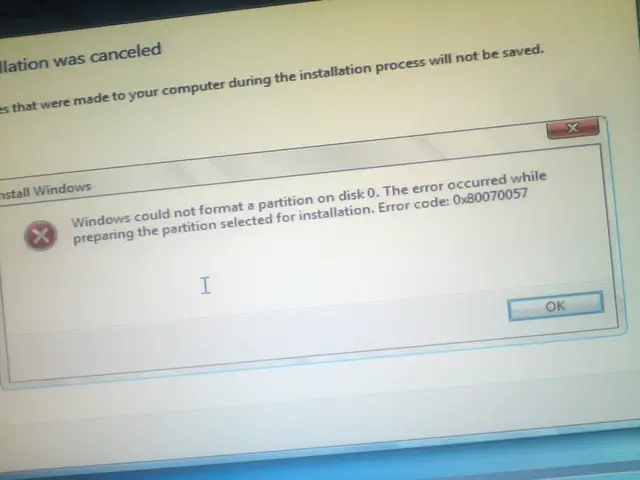

- Partition failed could not unmount disk how to#
- Partition failed could not unmount disk update#
- Partition failed could not unmount disk upgrade#
- Partition failed could not unmount disk software#
At times, the macOS installation process may even encounter some issues, causing the installation to be interrupted.
Partition failed could not unmount disk upgrade#
Most of the time, it will take a long time to finish a macOS upgrade process. macOS Could Not Be Installed on Your Computer FAQ.
Partition failed could not unmount disk how to#
Bonus Tip: How to Recover Your Mac Data?.Fix 9: Factory Reset Your Mac and Reinstall macOS.Fix 8: Reinstall macOS via Recovery Mode.Fix 6: Use First Aid to Fix the Startup Disk.Fix 4: Download a New Copy of the macOS Installer.Fix 3: Free up Disk Space for the macOS Installation.Fix 2: Make Sure the Date and Time Are Set Correctly.Reasons for macOS Could Not Be Installed on Your Computer.You can try these solutions to help you out.

Partition failed could not unmount disk software#
To fix the issue, MiniTool Software will show you some effective solutions in this article.
Partition failed could not unmount disk update#
Join the nixCraft community via RSS Feed, Email Newsletter or follow on Twitter.When you update your macOS, the error message of macOS could not be installed on your computer means that there is something wrong with your computer. He wrote more than 7k+ posts and helped numerous readers to master IT topics. Vivek Gite is the founder of nixCraft, the oldest running blog about Linux and open source.

How do I list the users on the file-system /nas01/? In other words, I am using the lsof to find out who is using a file system and then taking action to close the app or users accessing the file system. As soon as that program terminates its task, the device will no longer be busy, and you can unmount it with the following command. All you have to do is stop the vi process and umount again. The above output tells that a user named ‘vivek’ has a vi process running and using /dev/sda1 disk device under the Linux system. For example, if your device name is /dev/sdb1, enter the following lsof command as the root user: Hence, try the following command to determine the processes’ activities on the device/partition. There are many reasons for this, such as programs accessing partitions or open files, but the most important one is to prevent the data loss on a mounted file system. Linux / UNIX will not allow you to unmount a busy disk device.


 0 kommentar(er)
0 kommentar(er)
